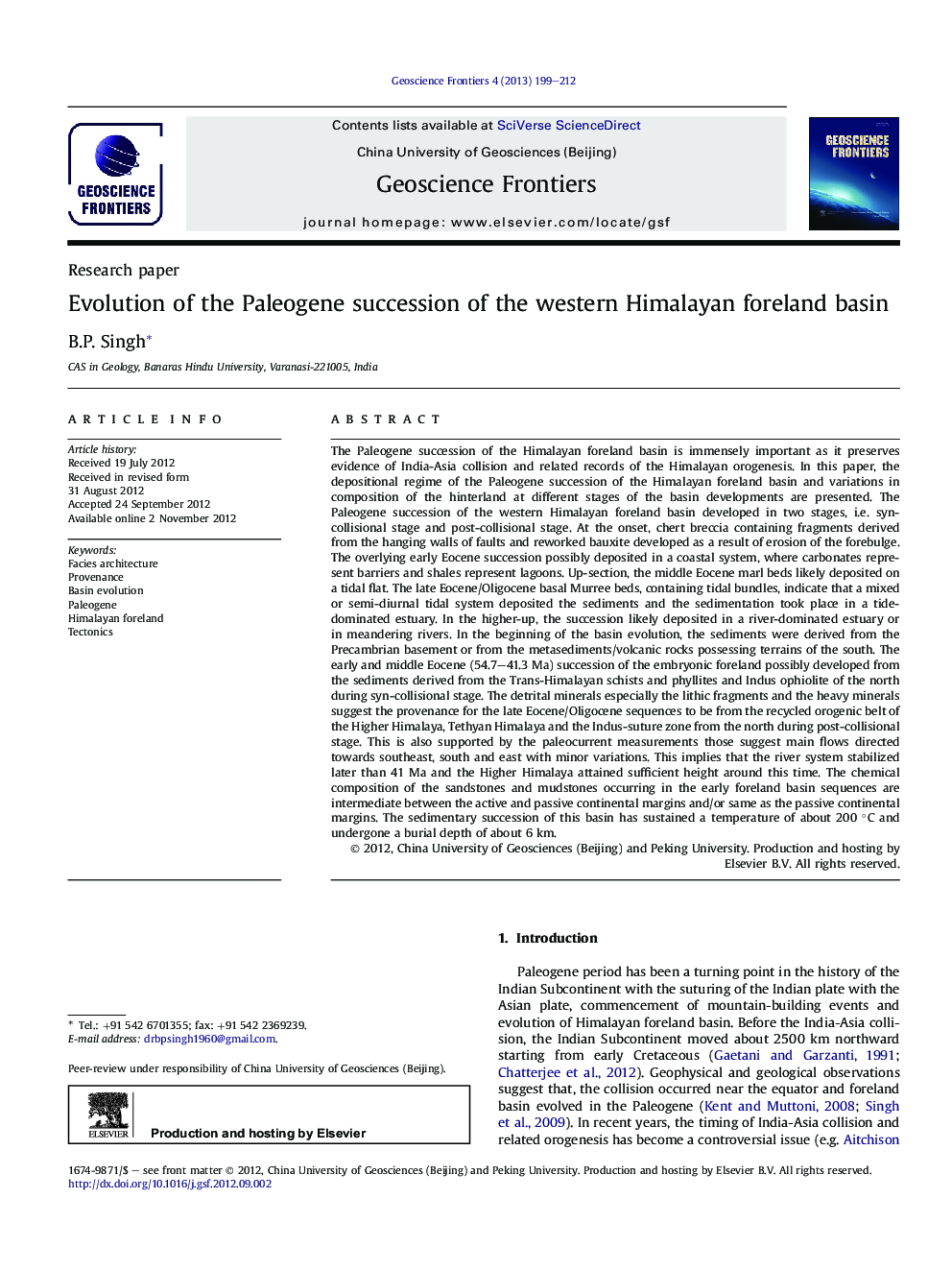| کد مقاله | کد نشریه | سال انتشار | مقاله انگلیسی | نسخه تمام متن |
|---|---|---|---|---|
| 4681665 | 1348865 | 2013 | 14 صفحه PDF | دانلود رایگان |
The Paleogene succession of the Himalayan foreland basin is immensely important as it preserves evidence of India-Asia collision and related records of the Himalayan orogenesis. In this paper, the depositional regime of the Paleogene succession of the Himalayan foreland basin and variations in composition of the hinterland at different stages of the basin developments are presented. The Paleogene succession of the western Himalayan foreland basin developed in two stages, i.e. syn-collisional stage and post-collisional stage. At the onset, chert breccia containing fragments derived from the hanging walls of faults and reworked bauxite developed as a result of erosion of the forebulge. The overlying early Eocene succession possibly deposited in a coastal system, where carbonates represent barriers and shales represent lagoons. Up-section, the middle Eocene marl beds likely deposited on a tidal flat. The late Eocene/Oligocene basal Murree beds, containing tidal bundles, indicate that a mixed or semi-diurnal tidal system deposited the sediments and the sedimentation took place in a tide-dominated estuary. In the higher-up, the succession likely deposited in a river-dominated estuary or in meandering rivers. In the beginning of the basin evolution, the sediments were derived from the Precambrian basement or from the metasediments/volcanic rocks possessing terrains of the south. The early and middle Eocene (54.7–41.3 Ma) succession of the embryonic foreland possibly developed from the sediments derived from the Trans-Himalayan schists and phyllites and Indus ophiolite of the north during syn-collisional stage. The detrital minerals especially the lithic fragments and the heavy minerals suggest the provenance for the late Eocene/Oligocene sequences to be from the recycled orogenic belt of the Higher Himalaya, Tethyan Himalaya and the Indus-suture zone from the north during post-collisional stage. This is also supported by the paleocurrent measurements those suggest main flows directed towards southeast, south and east with minor variations. This implies that the river system stabilized later than 41 Ma and the Higher Himalaya attained sufficient height around this time. The chemical composition of the sandstones and mudstones occurring in the early foreland basin sequences are intermediate between the active and passive continental margins and/or same as the passive continental margins. The sedimentary succession of this basin has sustained a temperature of about 200 °C and undergone a burial depth of about 6 km.
Figure optionsDownload as PowerPoint slideHighlights
► Paleogene succession in the Himalayan foreland basin deposited in a coastal system.
► Sediments derived from the Trans-Himalayan metamorphic rocks and Indus-Suture zone.
► Continental sedimentation began and river system stabilised later than 41 Ma when Higher Himalaya started uplifting.
Journal: Geoscience Frontiers - Volume 4, Issue 2, March 2013, Pages 199–212
